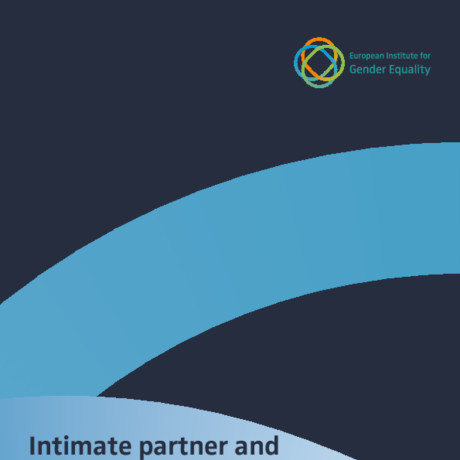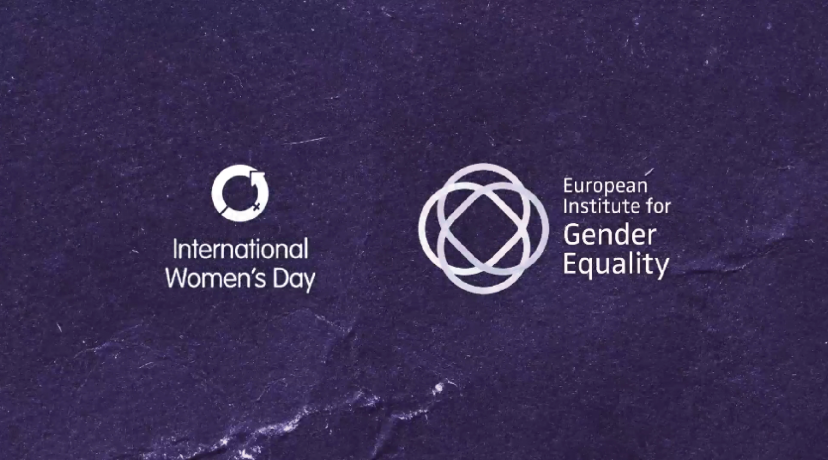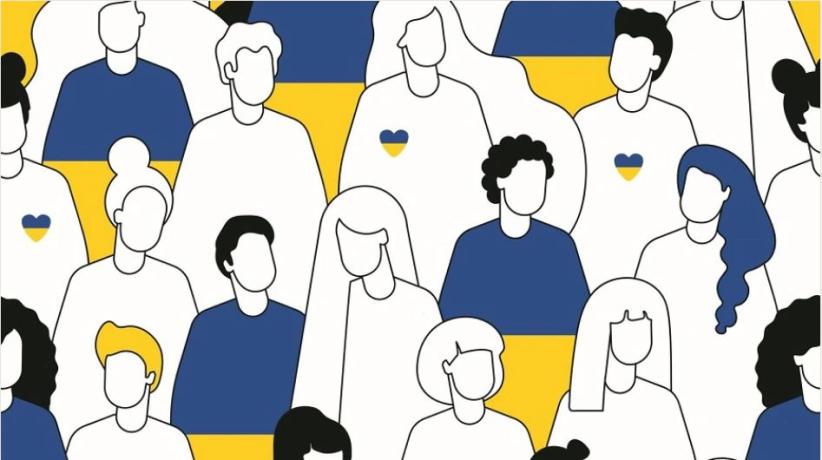In an informal meeting with European Gender Equality Ministers on 27 February 2024 under the Belgian Presidency, Director Carlien Scheele presented a vision of what gender equality could look like in 2030 – if we already put ourselves there.
Dear Ministers and colleagues,
Thank you for this invitation. I’m delighted to be amongst you all today.
And thank you to the Belgian Presidency for bringing together Ministers working on gender equality.
I am grateful for the opportunity to bring the European Institute for Gender Equality’s evidence to this discussion on looking ahead to 2030.
Knowing very well this is a pivotal year for Europe, this meeting couldn’t be timelier.
To get to 2030, we need to already imagine ourselves in 2030. Where today’s gender equality initiatives have transformed tomorrow’s society.
What does gender equality look like in concrete terms?
Seeing women in Science Technology, Engineering and Mathematics, or STEM – as natural as it is to see men in STEM. It is seeing men engaging in care responsibilities as naturally as women.
It’s seeing equal participation between women and men in the labour market – not another decade of stagnation which is where we stand now according to our last gender equality index results.
By 2030 everyone will have equal pay for work of equal value.
And violence against women and domestic violence will be something of the past. Thanks to extensive awareness-raising efforts and robust legislative support.
I could go on.
But I do believe that showing what full gender equality could look like, will be the fuel to drive our ambitions forward. So that the dream doesn’t remain as such.
The work accomplished for gender equality so far is nothing short of groundbreaking.
Starting from the Treaty of Rome in 1957 stating equal pay between women and men to where we are now with the 2020-2025 Gender Equality.
Since then, there has been a steady track record of progress. When you hear it all at once, it’s incredibly encouraging but when you look at how long these milestones have taken, it’s less so.
So now it’s not simply about continuing the move towards full gender equality in all aspects of life, it’s about accelerating it.
Just a few weeks ago, we saw commitment towards ending violence against women turning into action. On 6 February a provisional agreement was reached for the Directive on Combatting Violence Against Women and Domestic Violence Directive.
Such steps are what we need to see and hear to help us look ahead to 2030. Towards a Europe where the gender equality framework is further boosted – and implemented!
And it needs to start now.
The focus of my Agency’s work – the EU’s gender equality Agency - is indeed on feeding you with data and evidence for the future of gender equality. Which remains a challenge, in a Europe which faces widening inequalities.
According to the EU’s Megatrends Hub, different types of inequalities in society are persistent and widening – in education, the labour market and health, amongst other areas.
Gender and other inequalities continue to persist.
In fact, widening and diversifying inequalities is one of the 14 megatrends identified by the European Commission’s Competence Centre on Foresight. These megatrends are driving forces which will likely have a significant impact in the future. They are analysed as part of strategic foresight exercises which support future-oriented decision-making.
In 2023, our Agency conducted strategic foresight activities. We listened to a broad range of experts and stakeholders from the EU and Member States to reflect on the future of gender equality and better understand the trends and developments affecting gender equality in the EU. Over 100 people in addition participated in an online survey.
The results firmly positioned the priorities for the future. What our Agency identified as challenges for gender equality, was very much echoed and reflected by our stakeholders.
Firstly, digitalisation is transforming the way we live, work and interact. It offers unprecedented opportunities for progress – but risks and threats exist – the burden of which, falls disproportionately on women.
Women face increased online harassment, threatening their safety and mental well-being. Our work on cyber violence against women and girls only confirms this growing phenomenon – which can very well start online and continue offline. And vice versa of course.
Digitalisation brings a wealth of opportunities in the workplace but can also hamper opportunities for women when biased algorithms used for HR procedures such as recruitment reinforce stereotypes, hindering career progression and financial independence.
On that last and very significant point– our Agency will publish a study early May looking at the cross-section between financial independence and gender equality.
In this report, we see that men are more likely to be decision-makers in strategic decisions about spending saving, borrowing and debt. Our study shows that in the EU, across couples, 21% of women had no employment, with the partner being a single earner in the family. Whereas only 6% of men were in the respective situation. This has a significant impact on how women and men make decisions with regards to wealth. And of course, gender norms and stereotypes play a huge role as well.
We need further measures to support the drivers of women’s economic empowerment to overcome existing systemic barriers.
Let’s break these stereotypes and ensure that moving to 2030 will bring more equal opportunities for women and men in the labour market, by having access to individual income and generation of wealth, and for each person to have their own, gender equal, capacity to decide on how to access and go about income and wealth in one’s life cycle.
Moving onto the second trend: the nature of work. It’s changing at rapid speed - accelerated by technological advancements and the rise of the gig economy where flexible working conditions afforded by platforms such as Uber for freelance writers and graphic designers, are increasingly preferable to 9 to 5 conditions.
As ever, these changes pose challenges and opportunities for gender equality.
The gig economy while offering flexibility, often lacks the protections and benefits of traditional employment, placing a disproportionate burden on women who may also take on the majority of unpaid care work.
From our Agency’s survey on gender gaps in unpaid care, individual and social activities we found, that nearly half of women living with a partner report assuming primary responsibility for these kinds of essential tasks such as feeding, bathing, compared to a mere 6% of men.
Rather disturbing.
Thankfully though, addressing the issues of unpaid care has been key to the European Commission’s priorities. And we see this concretely with the adoption of the EU Care Strategy.
To keep the promise of high quality, affordable and accessible care services we need to see direct investment into care infrastructure at the national and EU level. And these investments need to align and connect with gender equality objectives in care.
Because like with all inequalities that persist, it’s going take ongoing dedication and political will to close the gender gaps in unpaid care. Otherwise, women face the burdensome reality of economic instability because they cannot fully participate in the workforce and thereby in society.
The third trend almost needs no introduction – but it comes with deep gender dimensions. Climate change and environmental degradation.
The link between gender equality and climate change is more and more resonant and real. Climate change is a threat multiplier to existing gender inequalities. Women, especially those in vulnerable communities or situations, bear the brunt of climate impacts due to existing social, economic and political inequalities. For example, regarding energy poverty. Women are particularly affected as they tend to have lower incomes, due to the gender pay gap and the gender pension gap.
Also, women may spend more time at home because of the gendered expectations related to household work and care. A 2022 Eurofound study which looked at the ability to pay energy bills saw that close to half of the respondents who were single mothers, anticipated difficulties paying their bills for the next three months.
And energy poverty is just one aspect. We can’t ignore the health implications either – with increased risks of respiratory illnesses and circulatory diseases such as heart failure or a stroke because of cold room temperatures. People have to choose between eating or heating in some extreme cases. Others stay on public transport longer to keep warm.
And finally, women are not able to invest as much as men in efficient devices or insulation – again – this is down to systemic gender inequalities. Their impact extends into every corner of life.
But back to the bigger picture and goal: we have a clear target for climate neutrality in 2050. But it comes with key considerations to see it realised.
Our environmental policies must both address the pressing challenges of climate change but also empower women as leaders and stakeholders in climate adaptation. The impacts of climate change are not gender-neutral and neither should the allocation of funding and power.
A green, fair and inclusive transition must start with understanding the existing gender gaps to build and finance targeted adaptation measures. This is precisely what our Agency’s 2023 focus theme on gender equality and the Green Deal focused on. Later this year we will publish the Gender-responsive Evaluation for an Environmental and Sustainable Future for All (GREENA) toolkit and a collection of good practices to help policymakers see the benefits of adding gender and intersectional perspectives to the Green Deal.
Now, from gender equality and the planet to gender equality and people.
We are in an age of shifting attitudes and values on gender equality. Populism and anti-gender movements seek to dismantle the evolution of laws and policies. Disinformation campaigns aimed at challenging democratic principles and fundamental rights are growing. We also see a tech-enabled backlash against women’s rights and gender equality.
My Agency has looked into the rise of such trends opposing gender equality in Europe, which has led to restrictive legislative measures and initiatives hostile to those defending women’s rights and gender equality. Examples of this include smear campaigns against women’s rights CSOs, physical and virtual attacks against women politicians, journalists and human rights’ activists.
In 2022 we produced an overview of policy and legal interpretations of gender and gender equality. And we are now looking into efficient communication strategies to better set our own gender equality narratives.
In addition we should never forget the structural dimensions of inequality. For example we need more women at the decision-making tables! Our evidence points to some good progress in women’s participation in political leadership but it’s still not enough to bring our ambitions for gender equality in Europe to life.
In the second quarter of 2023, the share of women among Members of the European Parliament was almost 40 %. Less than half of the Member States had at least 40 % of each gender among their MEPs.
Still, the lack of full gender balance diminishes the diversity of perspectives in decision-making processes, impacting the prioritisation of gender equality in policy agendas.
In 2024, our Agency will support national parliaments in the EU to better deliver on gender equality by providing: evidence on trends in gender equality and gender sensitivity of the European Parliament and national parliaments; and a practical tool on gender equality action plans for parliaments to help plan and monitor progress.
Now, just before I present my closing arguments for gender equality in 2030 – I want to tie a thread between everything I have just raised.
Because put together, all these inequalities have a lifetime impact.
Let’s suppose, you are a woman who is a victim of domestic violence. The physical and mental toll of the violence leaves such victim likely unable to work for a certain period. Then, you may not have a stable source of income for so long. And then you can’t pay your bills on time, and then you can’t heat your home because of energy poverty… and then…and then…
Another example – let’s say a husband and spouse who both have jobs, decide to start a family.
But because of gender roles and a lack of available care services, the woman is more likely to give up her job for a while and then go back to work part time. This is essentially a route to and the root cause of the gender pension gap – based on the gender pay gap which increases with age. Our evidence shows that in the youngest age group (18-24), women’s annual net income was estimated to be 15% lower than men’s and in the oldest age group (65+) it’s 39% lower than men’s. And then of course you also have the motherhood penalty which works against women’s access to financial independence. It all adds up.
Today’s inequalities become tomorrow’s inequalities.
And statistically, women have a longer life expectancy. So, these inequalities could continue for many, many years.
That’s why your discussions today are so crucial. The examples I just gave show why it is so crucial to take gender into account horizontally in all policy areas, both on EU and national level.
That brings me to my final point. Are we putting enough resources into the institutions, tools and frameworks we have set up to promote gender equality and gender mainstreaming?
Our research over the years shows that on one hand, the EU MS have strong national structures for gender equality and gender mainstreaming. There is no comparison to any other region of the world. But when we look at resource allocations for gender equality, we see for example that human resources for the national gender equality bodies and gender mainstreaming show the lowest scores.
Since 2012, there has been a decrease in commitment to gender mainstreaming. The practical implementation of gender mainstreaming is higher in countries that have legislation mandating the use of gender mainstreaming than those without.
Our research clearly shows that we need to step up the use of gender mainstreaming in the EU to design policies that benefit both women and men in all their diversity. We will continue to provide practical tools and guidance to support Member States on their way to more gender-sensitive policymaking.
Let me again stress that gender budgeting is a strategic tool to support the integration of a gender equality perspective in budgets, to help us make informed decisions and to move ahead on gender equality. Gender-responsive budgets can support women’s labour market participation, create sustainable growth, social development, and prosperity and contribute to the EU’s competitiveness. All issues that the megatrends I mentioned earlier highlight.
And if I look beyond 2030 and land in 2050 – our evidence shows that improving gender equality we can foresee the EU’s Gross Domestic Product at €3.15 trillion which is a 9.6% increase from where we are now.
It speaks for itself.
Dear ministers, change is in your hands.
The paths chosen now will shape and strengthen our near future.
I hope my thoughts will be of inspiration for you now to discuss challenges which will require particular attention in the future European gender equality agenda.
Thank you very much.




